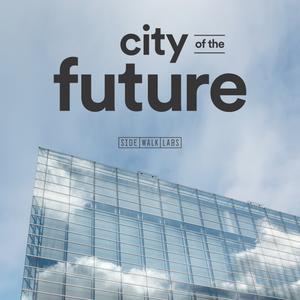
City of the Future
Sidewalk Labs
We explore the innovations and ideas that will transform our cities.
- 3 minutes 55 secondsAn Update from Vanessa
As you might have heard, Sidewalk Labs became a part of Google at the beginning of 2022. So City of the Future has been on hiatus...BUT I’m still creating podcasts that I think CotF listeners would like. And I’d like to share them with you all!
- Urban Roots. If you enjoyed City of the Future season 4, which was all about equitable development, then you should definitely check out Urban Roots. We not only tell the histories of women and people of color that you probably don’t know, we also draw the throughline from the past to the present, and talk to folks who are doing equitable, preservation-based development that takes those histories into account. Our two-part series on Indianapolis is a great place to start, but we have episodes on Brooklyn, Cincinnati, and Los Angeles, too. Learn more about it by visiting urbanistmedia.org or emailing [email protected].
- Uncertain things. Less for the urbanist than for the person who is seeking to pop their media bubble, my journalist roommate and I created this interview show back in 2020. We purposely seek out academics, writers, journalists, thinkers across the political spectrum — people who actually want to enter into conversation and debate and leave their silos behind. The nice thing about Uncertain things is that I get to talk with whomever I find interesting and insightful, like evolutionary biologist Nicholas Christakis, historian Niall Ferguson, and journalist Caitlin Flanagan. We do sometimes talk to urbanists, too — like Vishaan Chakrabarti, Justin Davidson, and Michael Kimmelman (coming soon). You can subscribe to it at uncertain.substack.com and email us [email protected].
Last two things — I’d love to hear from City of the Future fans! Reach me via vanessaquirk.com. And if you're an urbanism company who would like to hire me for my podcasting/comms expertise, reach out! Again, at vanessaquirk.com
I hope you all have a very happy, safe holiday season. Hopefully I’ll be seeing you — in the future!
19 December 2022, 12:14 pm - 28 minutes 48 secondsEpisode 20: The ”S” in ESG
E-S-G. If you haven’t heard that term before, it stands for Environmental, Social, and Governance. It’s a framework that investors use to help them decide whether or not to put money into a company. Over the last 20 years, investors have increasingly embraced the “E” in ESG, and ESG funds are now consistently driving strong returns. In fact, 2020 was the biggest year for ESG-investing yet.
With the events of 2020, the “S” of ESG — which includes some of society’s toughest problems, like economic opportunity and racial inequity — has come to the forefront. Investors are, more and more, pursuing socially-minded ESG investments. And this pivot has huge implications for real estate, as investors are now ready and willing to lend capital to real estate companies that are pursuing projects with real social and racial impact.
But what do those projects look like, and how can real estate transform the development process to achieve them? As we’ve explored throughout this season of City of the Future, developing socially-minded projects is a complex undertaking. Our season finale explores ways developers can begin to figure out what this “S” piece of ESG means. And if they can, it’s not just real estate that will benefit — our cities will, too.
In this episode:
- [00:00 - 05:34] The founder and CEO of Green Generation, Brad Dockser, describes investors’ embrace of the “E” of ESG.
- [05:35 - 8:29] Associate director of inclusive development at Sidewalk Labs, Chrystal Dean, explains why it’s time for development to tackle the “S” of ESG.
- [08:30 - 15:07] The principal and CEO of Direct Invest Development, Carlton Brown, talks about the kinds of long-term, socially-minded metrics developers need to track.
- [15:08 - 19:22] Director of development and external affairs for Farpoint Development, Morgan Malone, explains how to create social metrics in collaboration with communities.
- [19:23 - 27:07] The hosts, Vanessa Quirk and Eric Jaffe, discuss the development business case for socially-minded projects with associate director of inclusive development at Sidewalk Labs, Chrystal Dean.
To see images and videos of topics discussed in this episode, read the link-rich transcript on our Sidewalk Talk Medium page at https://bit.ly/3GB3zoU.
City of the Future is hosted by Eric Jaffe and Vanessa Quirk, and produced by Guglielmo Mattioli. Story editing by Rough Cut Collective and Benjamin Walker. Mix is by Andrew Callaway. Art is by Tim Kau. Our music is composed by Adaam James Levin-Areddy of Lost Amsterdam. Special thanks to Brad Dockser, Carlton Brown, Chrystal Dean, and Morgan Malone.
14 December 2021, 10:00 am - 27 minutes 6 secondsEpisode 19: Next-Gen Manufacturing
In the early 20th century, many U.S. factories were located in urban cores, where workers could easily access their jobs. But the benefit of proximity also meant workers lived near loud, polluting factories. And as we know from the history of zoning in the U.S., low-income people frequently had no option but to live in neighborhoods built around intense industrial use.
The consequences of those land use decisions are felt most severely today by communities of color, who continue to suffer from higher rates of health issues like asthma and cancer. So bringing manufacturing back to urban neighborhoods — especially neighborhoods that may have been exposed to the harms of the industry — may seem fraught. But it also offers an opportunity to right some of these historic wrongs.
In this week’s episode of City of the Future, we explore the idea of bringing a new generation of cleaner, greener manufacturing facilities back into our urban cores. We talk to folks at Buffalo’s Northland Workforce Training Center, the Brooklyn Navy Yard, and the Boston-based development Indigo Block. We also consider the potential for next-gen manufacturing to create wealth-generating opportunities for people who need it, jumpstart development in disinvested communities — and even provide a new, more resilient economic model for our cities.
In this episode:
- [00:00 - 1:33] A brief history of urban manufacturing in the U.S. from World War II to present.
- [1:34-5:32] We interview an expert in workforce development, Stephen Tucker, in Buffalo, New York about Northland Workforce Training Center, an organization with a mission to prepare local residents for careers in advanced manufacturing and clean energy.
- [6:44 - 8:56] Hosts Vanessa Quirk and Eric Jaffe discuss how the 20th-century history of zoning and land-use decisions around manufacturing negatively impacted low-income and Black neighborhoods.
- [8:57 - 16:24] The Brooklyn Navy Yard’s chief development officer Johanna Greenbaum introduces us to different folks who work at the Yard’s next-gen manufacturing companies, including Nanotronics’ chief operating officer, James Williams.
- [16:25 - 25:50] We talk to Dorchester Bay Economic Development Corporation’s director of real estate, Beth O’Donnell, and director of strategy and development, Kimberly Lyle who show us around one of their most recent projects, Indigo Block — a real live next-gen manufacturing ecosystem!
To see images and videos of topics discussed in this episode, read the link-rich transcript on our Sidewalk Talk Medium page at https://bit.ly/3rSbrys.
City of the Future is hosted by Eric Jaffe and Vanessa Quirk, and produced by Guglielmo Mattioli. Story editing by Rough Cut Collective and Benjamin Walker. Mix is by Andrew Callaway. Art is by Tim Kau. Our music is composed by Adaam James Levin-Areddy of Lost Amsterdam. Special thanks to Stephen Tucker, Johanna Greenbaum, James Williams, Beth O’Donnell, Kimberly Lyle, Alison Novak, Jesse Shapins, and Chrystal Dean.
10 December 2021, 10:00 am - 29 minutes 56 secondsEpisode 18: Innovation Ecosystems 2.0
Innovation ecosystems — places where companies and anchor institutions cluster and connect with startups, incubators, and smaller accelerators — are far from a new urban trend. As technology has become core to our economy in the past few decades, big coastal cities like Boston, San Francisco, and Seattle have become big tech innovation ecosystems, attracting more and more talented workers, startups, and investment capital from across the country and the world every year.
Despite all the growth spurred by these tech-based innovation ecosystems, the resources and the capital haven't been shared equitably with existing communities. Additionally, as we’ve seen in these big coastal cities, the creation of housing hasn’t kept up with the influx of workers — causing prices to skyrocket and creating new challenges for lower-income groups and people of color.
But there’s a new global trend happening to intentionally plan innovation ecosystems in a way that still brings the advantages of economic opportunity and jobs, while also attempting to share the benefits more broadly. In this episode, we explore this new generation of innovation ecosystems that could not only spark economic growth, but offset some of the urban development approaches that have left too many neighborhoods behind.
In this episode:
- [0:00 - 5:50] Phil Armstrong, executive director of Greenwood Rising Black Wall Street History Center, and Trey Thaxton, entrepreneur and owner of the Tulsa-based Goldmill Co. and Greenwood Ave. cover the history of Tulsa, Oklahoma, and what tomorrow could look like with a new innovation ecosystem in place.
- [5:51 - 10:33] The podcast hosts Vanessa Quirk and Eric Jaffe discuss Innovation Ecosystems and how a mixed-use innovation ecosystem in neighborhoods might benefit from the opportunities by staying in their communities as well as generating wealth over time.
- [10:34 - 22:16] Landon Taylor, co-founder of Legacy First Partners, and Victor MacFarlane, founder and CEO of MacFarlane Partners, explain their vision for the Freedom West that will allow the residents to have access to job training, entrepreneurship training, and access to capital to allow them to participate in the 21st-century economy.
- [22:17 - 29:03] Randy Wiggins, founding managing director of Build in Tulsa, and Brian Brackeen, general partner of Lightship Capital strives to build Tulsa as the most Black entrepreneur-centric ecosystem in the country and in the world.
To see images and videos of topics discussed in this episode, read the link-rich transcript on our Sidewalk Talk Medium page at https://bit.ly/3DdhNKL
City of the Future is hosted by Eric Jaffe and Vanessa Quirk, and produced by Guglielmo Mattioli. Story editing by Rough Cut Collective and Benjamin Walker. Mix is by Andrew Callaway. Art is by Tim Kau. Our music is composed by Adaam James Levin-Areddy of Lost Amsterdam. Special thanks to Phil Armstrong, Trey Thaxton, Landon Taylor, Randy Wiggins, Brian Brackeen, Alison Novak, Jesse Shapins, and Chrystal Dean.
3 December 2021, 11:00 am - 26 minutes 33 secondsEpisode 17: Wealth Beyond Ownership
Cities throughout the U.S. (and around the world) are struggling with the many issues that come with neighborhood growth and displacement. But what if, instead of being negatively impacted by development, residents benefited from it instead?
In this episode — part two of our two-part series on new models for wealth-building — we explore “neighborhood REITS,” a model that helps community members invest in local development projects. This innovative approach can help folks participate in their own communities’ growth, and as we see through the work of Albina Vision, it can also potentially begin to redress some of the racial inequities that have been baked into our housing system for decades.
In this episode:
- [00:00 - 05:30] Local Portland artist Cleo Davis shares the struggles of gentrification that destroyed the legacy of his community in the historically Black neighborhood of Albina.
- [06:16 - 13:07] Marc Norman, associate professor in affordable housing, breaks down a new wealth-building model called a neighborhood REIT.
- [13:08 - 23:09] Rukaiyah Adams, Board Chair of the Albina Vision Trust, discusses the history of Lower Albina and her hopes that a neighborhood REIT could be one way to help people access the multi-generational wealth that they were denied.
- [23:10 - 25:37] Cleo Davis wraps up with the hope that Albina Vision will be the greatest monument to Black creativity and prosperity that the neighborhood could have.
To see images and videos of topics discussed in this episode, read the link-rich transcript on our Sidewalk Talk Medium page at https://bit.ly/3FhzYQW.
City of the Future is hosted by Eric Jaffe and Vanessa Quirk, and produced by Guglielmo Mattioli. Story editing by Rough Cut Collective and Benjamin Walker. Mix is by Andrew Callaway. Art is by Tim Kau. Our music is composed by Adaam James Levin-Areddy of Lost Amsterdam. Special thanks to Cleo Davis, Marc Norman, Rukaiyah Adams, Winta Yohannes. Annie Koo, Alison Novak, Jesse Shapins, and Chrystal Dean.
19 November 2021, 10:00 am - 27 minutes 52 secondsEpisode 16: From Owing to Owning
Cities across the U.S. are suffering from dire housing crises. Housing supply is low, and prices are high — in some cities, sky high. And wages and income aren't keeping up. Many struggle to make rent, let alone save for a home.
So it’s no wonder that affordable housing programs often focus on getting people into homes — people need help now. But we also need long-term solutions that could help renters generate wealth they could pass on to their families and children. In other words, as essential as affordable housing is, it isn't enough on its own to close the wealth gap, which in the U.S. is particularly stark between Black and White Americans.
In the first episode of our new season of City of the Future, we talk to the founders of Esusu and Portland’s Community Investment Trust and explore new economic models that could help renters, particularly immigrants and new arrivals, become home or partial building owners — and have the opportunity to access multi-generational wealth as a result.
In this episode:
- [00:00 - 04:24] Marc Norman, associate professor in affordable housing, talks about the racial wealth gap and new economic models that could help non-homeowners generate wealth to pass on their families and children.
- [04:55 - 15:02] We speak with Abbey Wemimo and Samir Goel, the co-founders of Esusu, which helps renters achieve and improve credit scores by paying their rent on time.
- [15:03 - 26:34] Vanessa flies to Portland, Oregon to meet John W. Haines, organizer of Plaza 122, the country’s first Community Investment Trust. We also meet with Yonas Kassie, Hawi Muleta, and Sonya Damtew of the Ethiopian and Eritrean Cultural and Resource Center.
To see images and videos of topics discussed in this episode, read the link-rich transcript on our Sidewalk Talk Medium page at https://bit.ly/3DarHxB.
City of the Future is hosted by Eric Jaffe and Vanessa Quirk, and produced by Guglielmo Mattioli. Story editing by Rough Cut Collective and Benjamin Walker. Mix is by Andrew Callaway. Art is by Tim Kau. Our music is composed by Adaam James Levin-Areddy of Lost Amsterdam. Special thanks to Marc Norman, Abbey Wemimo, Samir Goel, John W. Haines, Yonas Kassie, Hawi Muleta, Sonya Damtew, Annie Koo, Alison Novak, Jesse Shapins, and Chrystal Dean.
12 November 2021, 11:00 am - 18 minutes 27 secondsBONUS: Development 101
The process of real estate development is critical to urban life. Without it, we’d have no homes, no stores, no community centers. But development isn’t working for everyone. All too often, new projects advance without sufficient concern for affordability, economic opportunity, or long-term vibrancy.
But as Sidewalk Labs' Head of Urban Development Alison Novak tells us, 2020 made a lot of people pause and ask: “What am I doing, and how am I impacting the world?” Real estate developers are no exception. Today, the industry is at a tipping point, and many developers are asking themselves how they can do better — while still making money.
This season of City of the Future will be all about the ideas and innovations that could lead to more equitable development. But before we can understand how development could become more inclusive in the future, we have to understand how it works today. So, in this bonus episode, Alison helps us dig into the financials, the planning documents, and beyond. Join us for some Development 101.
In this episode:
- [0:01 - 5:49] We meet with Sidewalk’s Head of Urban Development, Alison Novak, a long-time affordable housing developer at a project she once worked on in Prospect Lefferts Garden, Brooklyn. And we learn why, when it comes to community engagement, development can be fraught.
- [5:50 - 13:00] Alison gives us the breakdown of a development project, from how developers determine their pro forma, to when and how they refine the architectural design, to the risks involved in creating and getting approval for planning documents.
- [13:01 - 17:00] Alison describes the beginning of a shift toward more inclusive development happening in the industry, and why this matters now more than ever.
To see images and videos of topics discussed in this episode, read the link-rich transcript on our Sidewalk Talk Medium page at https://bit.ly/3ERCwVP.
City of the Future is hosted by Eric Jaffe and Vanessa Quirk, and produced by Guglielmo Mattioli. Story editing by Rough Cut Collective and Benjamin Walker. Mix is by Andrew Callaway. Art is by Tim Kau. Our music is composed by Adaam James Levin-Areddy of Lost Amsterdam. Special thanks to Alison Novak, Jesse Shapins, and Chrystal Dean.
5 November 2021, 10:00 am - 25 minutes 1 secondFlexible Streets
The pandemic has forced us to reexamine and reimagine how we use one of our most precious public spaces: our streets. From outdoor dining to expanded bike lanes, cities have been re-designing streets so they can be better shared by all — drivers, bicyclists, and pedestrians alike. But could we take this idea even further? What if we could use design and technology to make our streets more flexible? So they could change use according to the season, the week, or even the hour? In our season finale, we explore a future where city streets can do just that — and better respond to all of our needs.
In this episode:
- [0:01 - 6:44] We meet with transit guru Gridlock Sam to talk about the history of political battles over New York City streets and the recent changes in response to Covid
- [6:54 - 11:18] Aspen Director of Parking & Downtown Services Mitch Osur and Coord Head of Policy & Partnerships Dawn Miller explain how data is allowing cities to solve problems like traffic and curb congestion
- [11:43 - 14:40] We visit Sidewalk Labs Senior Creative Technologist Nick Jonas to test out Pebble, a new technology for vehicle occupancy detection
- [16:23 - 23:43] Associate Director of Planning & Delivery Siqi Zhu and Director of Mobility Willa Ng imagine how our streets can adapt to be shared more equitably
To see images and videos of topics discussed in this episode, read the link-rich transcript on our Sidewalk Talk Medium page.
City of the Future is hosted by Eric Jaffe and Vanessa Quirk, and produced by Benjamen Walker and Andrew Callaway. Mix is by Zach Mcnees. Art is by Tim Kau. Our music is composed by Adaam James Levin-Areddy of Lost Amsterdam. Special thanks to Sam Schwartz, Mitch Osur, Dawn Miller, Nick Jonas, Siqi Zhu, and Willa Ng.
4 December 2020, 11:30 am - 24 minutes 17 secondsFactory-based Construction
For about a century, architects and developers have dreamed of the promise of factory-based construction — after all, if Henry Ford revolutionized the auto industry with assembly lines, why shouldn’t we be able to make buildings in factories, too? But, in North America at least, almost every attempt to revolutionize this industry has failed. But now, thanks to innovations in design, materials, and machinery — and a green wave taking over the industry — factory-based construction could be an idea whose time has finally come.
In this episode:
- [0:01 - 3:11] We take a fun trip back in time to Expo 67 and explore why the influential prefabricated concrete building Habitat 67 was just too ahead of its time.
- [3:35 - 8:26] Northeastern University architecture professor Ivan Rupnik relays the history of factory-based construction, including Operation Breakthrough, the U.S.’s initiative to out-build the Soviet Union during the Cold War
- [8:46 - 16:28] Sidewalk Labs Director of Product Design for Buildings Karim Khalifa and Associate Director of Building Innovations Lily Huang describe how Sidewalk Labs is developing an architectural kit of parts to allow architects to build with quality, speed, and sustainability
- [16:43 - 22:30] Architect and author Susan Jones shares her experiences building her own prefabricated mass timber house and working on the committee to change international building code for mass timber
To see images and videos of topics discussed in this episode, read the link-rich transcript on our Sidewalk Talk Medium page.
City of the Future is hosted by Eric Jaffe and Vanessa Quirk, and produced by Benjamen Walker and Andrew Callaway. Mix is by Zach Mcnees. Art is by Tim Kau. Our music is composed by Adaam James Levin-Areddy of Lost Amsterdam. Special thanks to Ivan Rupnik, Karim Khalifa, Lily Huang, and Susan Jones.
20 November 2020, 12:00 pm - 24 minutes 5 secondsRemote Work
In an era of remote work, when people can work from anywhere, where will they choose to live? And what can cities do to set themselves apart from the competition? In this episode, we look at the ways remote work could change not just the way we live in cities — but which cities we live in, too.
In this episode:
- [0:01 - 4:47] Tulsa Remote community manager Taylor Allen tells her story of moving from Florida to Tulsa, Oklahoma, sight unseen
- [7:09 - 11:00] Professor of Urban Economics Richard Florida on why the future of economic development is about talent
- [12:02 - 14:06] Digital transformation adviser Anett Numa on how Estonia became one of the most digitally enabled countries in the world
- [14:12 - 16:23] Topia Chief Product Officer Sten Tamkivi on what kinds of factors draw people to specific cities
- [16:36 - 18:22] Topia Director of Product Management Chantel Rowe shows Estonia’s digital infrastructure in action — and how it made her move to the country easy
- [19:43 - 22:59] Taylor returns to explain why fostering a sense of community matters in attracting talent
To see images and videos of topics discussed in this episode, read the link-rich transcript on our Sidewalk Talk Medium page.
City of the Future is hosted by Eric Jaffe and Vanessa Quirk, and produced by Benjamen Walker and Andrew Callaway. Mix is by Zach Mcnees. Art is by Tim Kau. Our music is composed by Adaam James Levin-Areddy of Lost Amsterdam. Special thanks to Richard Florida, Anett Numa, Sten Tamkivi, Chantel Rowe, and Taylor Allen.
30 October 2020, 11:30 am - 24 minutes 12 secondsGenerative Design
Generative design is the process of automatically producing thousands of designs based on goals and constraints you feed into a computer. In this episode, we ask: could you apply generative design to something as complex as the urban planning process? Could it reveal better designs for buildings, neighborhoods, districts — showing us options we didn’t even know were possible? And, in the future, could this new emerging field even empower urban development teams to create better, more human cities?
In this episode:
- [0:06 - 4:13] Hosts Vanessa Quirk and Eric Jaffe on the unintended consequences of the 1915 Equitable Building (the “monstrosity” that influenced New York City’s first zoning laws)
- [4:15 - 11:42] Sidewalk Labs’ Senior Product Manager Violet Whitney and Senior Design Lead Brian Ho on Delve, a product that uses generative design to reveal unexplored urban design options for any given development project
- [11:43 - 18:13] Carnegie Mellon University’s Associate Professor of Ethics & Computational Technologies Molly Wright Steenson on the history of architecture and computing — and the contributions of thinkers like Cedric Price, Christopher Alexander, and the MIT Architecture Machine Group
- [18:14 - 20:16] Geographer and City Planner Evan Lowry on how visualization software could transform community engagement in Charlotte, North Carolina
- [20:19 - 22:42] Violet and Brian return to explain why it’s important for cities to visualize how urban designs could impact their communities.
To see images and videos of topics discussed in this episode, read the link-rich transcript on our Sidewalk Talk Medium page.
City of the Future is hosted by Eric Jaffe and Vanessa Quirk, and produced by Benjamen Walker and Andrew Callaway. Mix is by Zach Mcnees. Art is by Tim Kau. Our music is composed by Adaam James Levin-Areddy of Lost Amsterdam. Special thanks to Violet Whitney, Brian Ho, Molly Wright Steenson, and Evan Lowry.
16 October 2020, 11:00 am - More Episodes? Get the App
Your feedback is valuable to us. Should you encounter any bugs, glitches, lack of functionality or other problems, please email us on [email protected] or join Moon.FM Telegram Group where you can talk directly to the dev team who are happy to answer any queries.
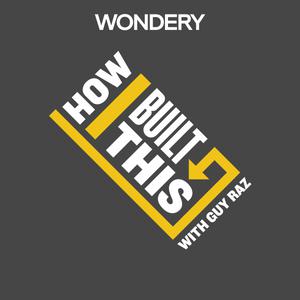 How I Built This with Guy Raz
How I Built This with Guy Raz
 The Daily
The Daily
 Up First from NPR
Up First from NPR
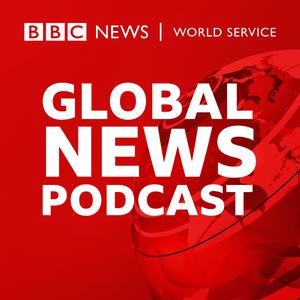 Global News Podcast
Global News Podcast
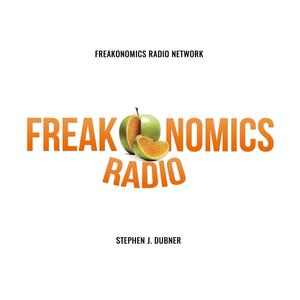 Freakonomics Radio
Freakonomics Radio
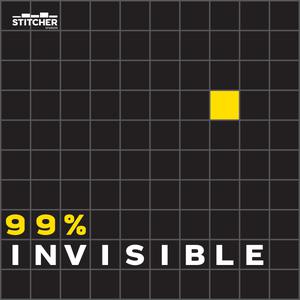 99% Invisible
99% Invisible